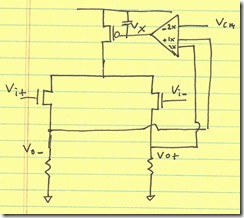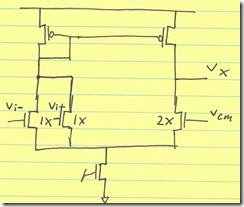In response to:Watch Full Movie Online Streaming Online and Download
Hi all,
I came across a dc biasing problem of a homodyne receiver.
The output of the direct conversion mixer is connected to a VGA. The
first stage of VGA and the output of mixer have different DC biasing
values. I know common source or source follower could be used to shift
the DC bias. But we will lose the flexibility of tuning the biasing of
VGA during experiment.
Is there any other means to bias the VGA in this case?
thanksfz
My first reaction is that whenever possible, capacitive coupling should be used. I don’t know the topology of mixer, but in many cases, a dc bias block between the RF amp driving the mixer and the mixer itself can allow the mixer to take on whatever common-mode the post-mixer amplifier (PMA) or VGA in this case requires.
If that’s not possible, a simple circuit can be used to do a calibrated common-mode level shift. Obviously, the source-follower can be used. However, source-followers aren’t generally calibrated to a specific voltage level (the amount of level shift is a VGS of a device, which is difficult to calibrate).
Instead, I came up with the following circuit:
The output voltage is sensed and the tail current is adjusted by the feedback op-amp to set the desired common-mode output voltage. In this case, we need an op-amp that senses the common mode and does an error-feedback, comparing to the desired common mode, VCM. We could do this two-steps: sense the common-mode by averaging the two output voltages, and then differencing with the desired common mode.
Instead, a modification of the typical diff-pair can be used to both do the summing of the two outputs and to compare with a reference common mode:
The above circuit doesn’t have the bandwidth that an open-loop source-follower would have. However, that’s another advantage: it can be used to provide a pole of filtering.
Any questions? Post in the comments below.

